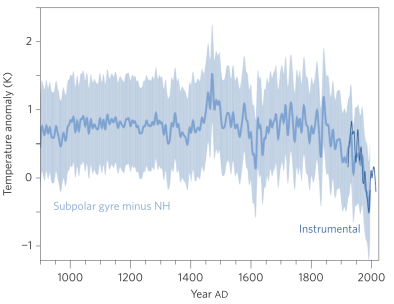North Atlantic Cold Blob 2013 - 2016
During 2015—which was the hottest year on record by a record wide margin—one small region in the North Atlantic had its coldest annual temperature on record, a phenomenon climate scientists believe may have to do with the slowdown of the Atlantic Meridional Overturning Circulation (AMOC).
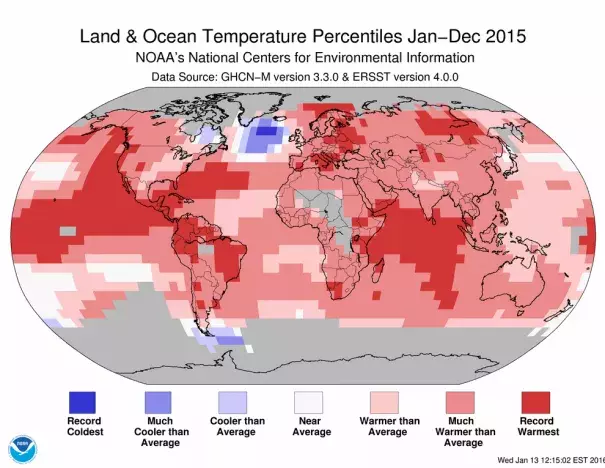
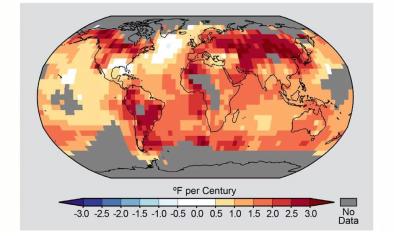
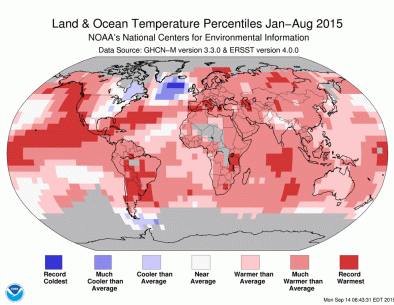
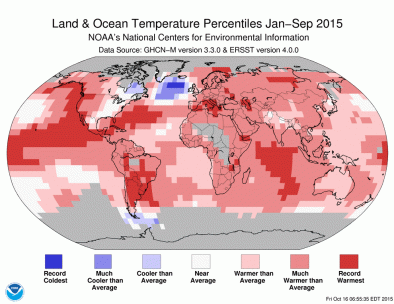
Record cold blob in the North Atlantic may signal slowdown of ocean circulation
A large area of surface ocean water in the North Atlantic has recently experienced a pronounced cooling trend. Referred to as the "North Atlantic cold blob," the cool, and in some regions, record cold water may signal the slowdown of an important component of the Earth’s climate system known as the Atlantic Meridional Overturning Circulation, or AMOC. The aptly named AMOC is an ocean current in the Atlantic characterized by the transport of warm water along the surface to the North; the sinking of this water in the Arctic as it cools and increases in density; and the southward transport of cool water along the deep ocean.
The blob is the result of cold water building up at the surface in the North Atlantic instead of sinking. The leading theory as to the cause of this cold water traffic jam is the addition of cold, fresh water from the rapid melting of the Greenland ice sheet, which disrupts the Atlantic's overturning circulation.
'Freshening' of North Atlantic waters implicated in circulation slowdown
Research indicates a 19,000km^2 increase in freshwater storage in the northern Atlantic between 1961 and 1995. Scientists have proposed several sources of additional freshwater, including increasing river discharge into the Arctic Ocean[1] and melt water and iceberg discharge from the Greenland Ice Sheet.
The glaciers and ice sheets of Greenland are among the largest bodies of fresh water on the planet. The surface of the Greenland ice sheet has been experiencing summer melting over increasingly large areas during the past several decades. In the decade of the 2000s, the daily melt area was double the corresponding amount of the 1970s,[2] culminating in summer melt that was far greater in 2012 (97 percent of the Greenland ice sheet area) than in any year since satellite records began in 1979. More importantly, the rate of mass loss has accelerated in recent decades.[3]
"The fact that a record-hot planet Earth coincides with a record-cold northern Atlantic is quite stunning. There is strong evidence...that this is a consequence of the long-term decline of the Gulf Stream System, i.e. the Atlantic ocean’s overturning circulation AMOC, in response to global warming." Stefan Rahmstorf of the Potsdam Institute for Climate Impact Research

